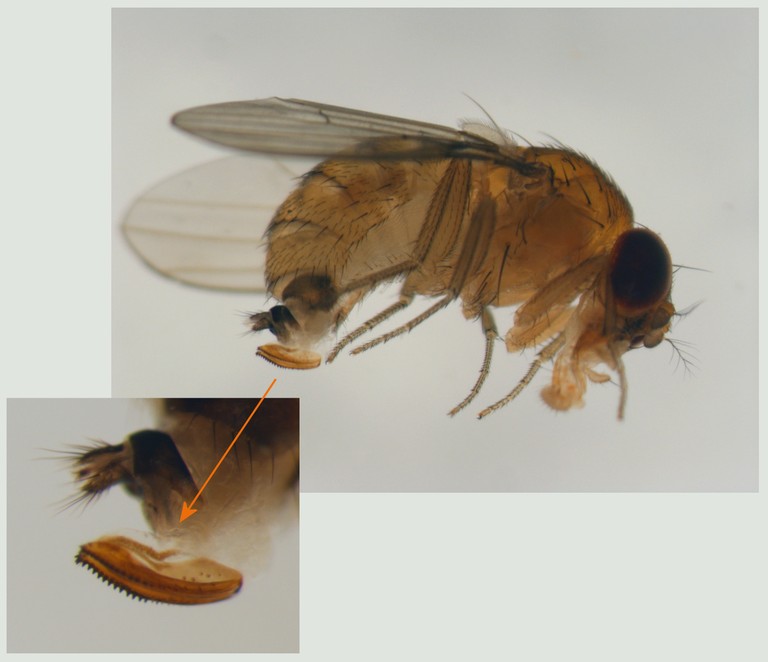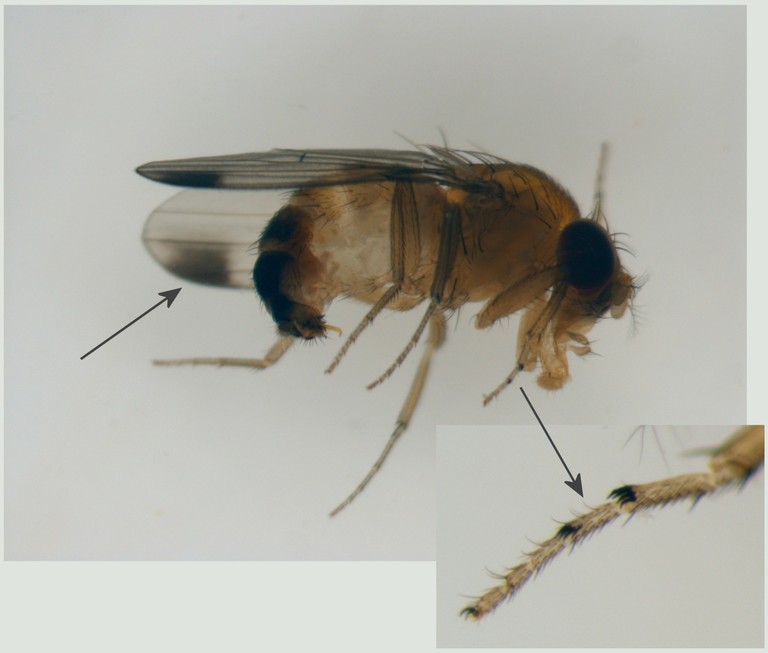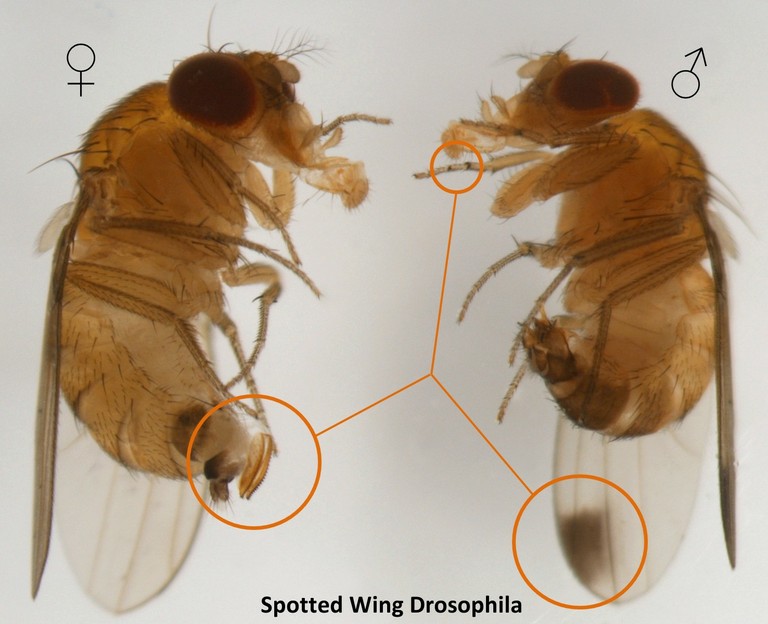Spotted Wing Drosophila in Oklahoma
About SWD
The invasive fly, spotted winged Drosophila (SWD) Drosophila suzukii, is a serious pest that damages small fruits (e.g., strawberries, blueberries, raspberries, grapes, and blackberries), stone fruit crops (e.g., cherries, peaches, and plums), and threatens profitability of many fruit industries. In addition, SWD have been found in unmanaged ornamental and wildland (non-crop) berries, another food source of unknown relevance.
Drosophila suzukii is one of the few Drosophila species capable of laying eggs within ripening fruit on the plant. Larvae feed within the fruit, and fruit quality is reduced. The small fly has a body length of 2-3 mm, with red eyes and a yellowish-brown body (see images below). Male flies have two distinguishable dark bands (3-6 combs/band) running parallel on each foreleg; and after the first day of adulthood show a small dark spot on the leading edge of each wing. Females do not have a wing spot. However, females have a large saw-like ovipositor, clearly visible under a microscope that can be used as a diagnostic characteristic to differentiate them from other Drosophila. Most females mate before overwintering; go through reproductive diapause; and ovaries develop sometime in the spring. Female survival is higher than males. Flies feed in spring, and then females find ripening host fruit to lay eggs into them, unlike other common vinegar flies that prefer rotting and decomposing fruit. Eggs develop into larvae that feed on the fruit interior. Initially, infested fruit do not exhibit signs of damage, other than scarring at the egg-laying site. Within as few as 2 days of larval development the fruit begins to collapse and soften around the feeding site. Fungal and bacterial infections contribute to further breakdown, resulting in unmarketable fruit.
Resources





